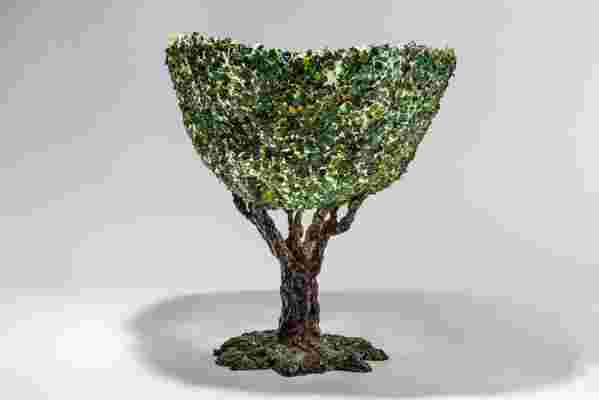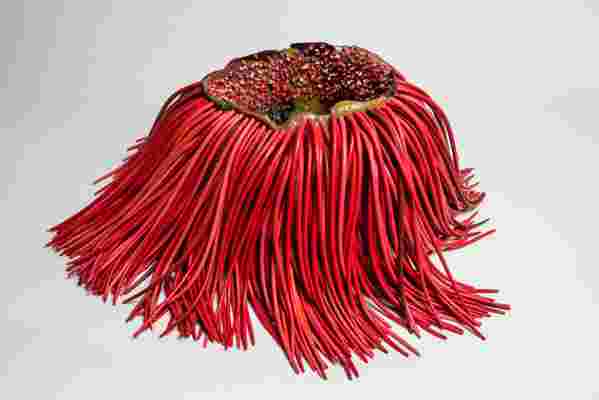Gaetano Pesce’s Show “Gelati Misti” Isn’t About Ice Cream
A few months back, an ice cream cone arrived in the mail. “Molds,” it read, flopping lazily on its side. “Gelati Misti” followed in parentheses. The two-dimensional treat—with its pastel, plasticine glisten—was the invitation to an exhibition of legendary designer Gaetano Pesce’s cast-resin vases, furnishings, and reliefs opening September 3 at the MOCA Pacific Design Center, the West Hollywood annex of the Museum of Contemporary Art, Los Angeles.
Gelato is not an unusual form for Pesce’s work to take. In fact, the artist compares part of his process—where resin is solidified through various ad hoc casting techniques—to that of food preparation. “For me, working with synthetic materials is very easy because I learned to cook at my house when I was young,” he says. “With my materials the process is very similar. There are some components—A,B,C—that interact in a process based on different percentage; they are mixed together, and generally you add some heat to help create the material you desire.” The results tend to bear striking resemblance to a plate, or heaping pile, of spaghetti.

Vase Albero.
Pesce, who made his name in the industrial-design world with iconic pieces like the bulbous UP chair and ottoman he designed for B&B Italia in 1969, veered away from mass production in the mid-’90s and began crafting his one-of-a-kind resin works. The new L.A. show—featuring more than 70 objects, reliefs (called “industrial skins”), and furniture pieces—was organized by MOCA senior curator Bennett Simpson and Pesce collector and scholar John R. Geresi, who contributed almost half of the items in the show. Goopy-looking vessels jiggle to the touch. Spaghetti strands form flower vases and bulky bangles. Chairs seem ready to puddle onto the floor.
“There is the melting factor,” says interior designer Jim Walrod, Pesce’s longtime friend, who lives with a door, sofa, and numerous vases by the artist. “If you have too much, it can look like your apartment caught fire.”
To Walrod, these works represent an irreverence that the design world desperately needs: “This is no different than any punk-rock single, or any independent anything,” he says. “The intent is so expressionist and immediate. It draws more to art than to design. Someone has taken to pouring resin on the floor the same way Jackson Pollock had done with paint.”

Vase with hair.
Faced with those who find his work less than aesthetically pleasing, Pesce couldn’t care less: “Each of us can have an ideal beauty,” he says. “My ideal of beauty in certain moments of my life was the malfatto, the object with defects.”